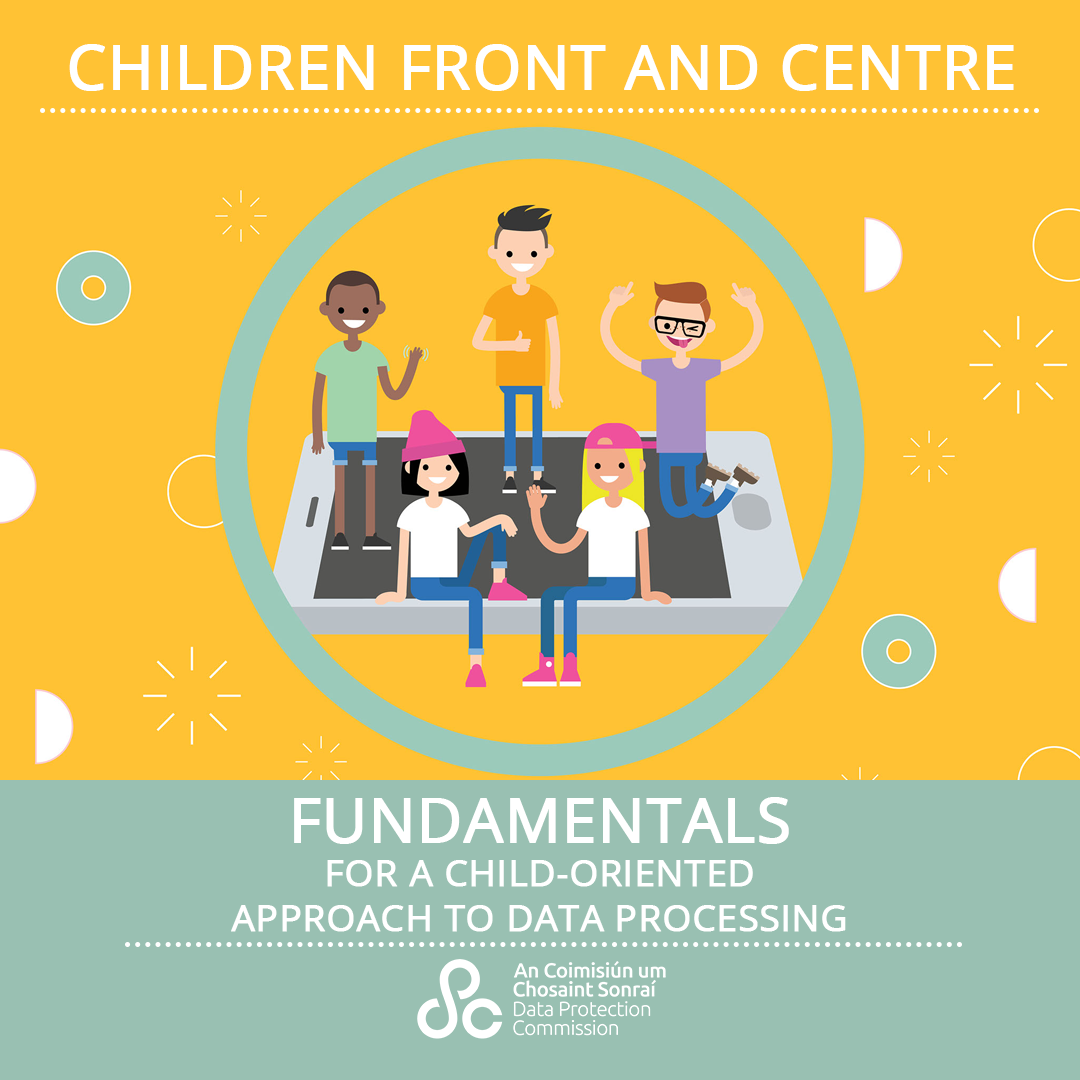Children
“Pause Before You Post” Awareness Campaign
"Sharenting": The term ‘sharenting’ is a combination of the words ‘parenting’ and ‘sharing’ and is used to describe the practice of parents regularly sharing information, photos and videos about their children on social media and other online platforms.
Risks of Sharenting
The simple act of sharing information, photos, and videos of children online can lead to unintended oversharing of personal data, which, in the wrong hands, can have serious consequences.
Our “Pause Before You Post” Awareness Campaign is designed to show how those risks can play out in real life, as we learn from the family’s interactions with the three “strangers”. From their social media posts, Éabha’s parents have inadvertently “shared with the world” her name, age, date of birth, photos of her friends, the name and location of her football club , her training schedule and the fact that her Dad is not always on time to collect her. We also show how easy it is for images to end up in the wrong hands, as we see our third stranger downloading one of the photos of Éabha and saving it to his phone.
Sharenting can present a number of risks, including:
Digital footprint: By sharing about their children online, parents are creating a digital footprint for their child from a very early age, and often without their knowledge or consent. This can include photos, videos, and other personal information that may be difficult to erase later on. In addition, if parents share images without talking to their child about it, they miss out on a chance to teach their child about consent and the value of their personal data.
Misuse of images for harmful purposes: When we share online, we risk losing control of what we post. This can lead to risk of images/videos of children being used or repurposed in malicious ways that can cause serious harm, for example using images of a child to produce deep fakes and child sexual abuse material (CSAM). A recent study[1] conducted by Perspectus Global highlighted that only 20 images of a child are needed to create a deepfake video of them, and parents upload an average of 63 images to social media every month. Furthermore, according to a report carried out by French organisation “Foundation pour l’enfance” (Children’s Foundation), 50% of children’s photos and videos shared on paedo-criminal forums have been initially published online by their own parents[2].
Vulnerability to unwanted contact: Photos and videos often contain information about the location and time at which the image was taken (due to the metadata, particularly GPS data) which can then also reveal valuable information about your children, such as their point of interests or the places they frequently attend. This information, when placed in the hands of ill-intended individuals, can have serious consequences.
Online reputation: Those delightful baby photos in silly outfits or toddler tantrum meltdown videos might not be so endearing to a thirteen-year-old. Embarrassing photos or videos can have a negative impact in the school setting (e.g. risk of bullying), or on the child’s personal and professional future, especially if they are shared widely and without the child's consent. Remember, what might seem like no big deal to share today, could be very problematic tomorrow.
Identity theft and fraud: According to Barclays[3], sharenting is the "weakest link" in risking online fraud and identity theft. Information that parents often post like their child's name, date of birth, the name of their school, or their favourite spots team, can be misused to hack passwords or for identity fraud scams. Barclays further estimated that by 2030, parents sharing images of their children online will account for two-thirds of identity fraud, with approx. 7 million incidents of identity theft and over £670 million in online fraud. [4]
Remember: When you share their life online, you risk sharing their personal data with the world. Pause before you post.
[2] Source: Report by the Children's Foundation, Generative AI, the new weapon of paedophile crime, October 2024 (Rapport de la Fondation pour l’enfance, l’IA generative, nouvelle arme de la pédocriminalité, oct. 2024) (as cited on www.cnil.fr)
[3] See report: 'Sharenting' puts young at risk of online fraud, May 2018.
[4] Ibid
Background to Sharenting project between DPC and CNIL
In November 2025, the DPC launched it’s “Pause Before You Post” campaign to raise awareness of the potential risks and consequences of “sharenting” – the habitual sharing of personal information, photos and videos by parents of their children online.
This initiative has been carried out in conjunction with our French counterparts, the CNIL. As two Data Protection Authorities (DPAs) who are committed to the protection of children online, supporting digital literacy and empowering parents, this campaign contributes to both organisations’ current strategic priorities.
A digital parenting survey conducted in 2024 by the international Digital Education Working Group of the Global Privacy Assembly highlighted “sharenting” as an important emerging topic that is proving harmful to children’s rights and personal data.
Both DPAs considered it important to raise awareness amongst parents about this practice, which is becoming more prevalent and can have negative consequences for children’s privacy, autonomy and emotional well-being.
Objective of campaign
The objective of this campaign is to raise awareness of the risks associated with parents posting their children’s personal data online. Personal data is any type of information that helps identify who someone is. This can include things like someone’s name, address, and age, but can also include things such as photos/videos, voice recordings, information about someone’s health and wellbeing, and their likes and dislikes.
When all of this information is pieced together, it creates a digital footprint of someone’s online activity. By sharing images, videos and any kind of content featuring children, parents are (often unknowingly) creating a digital footprint for their child. This information can easily be pieced together by bad actors and lead to serious privacy and safety risks.
Further guidance related to children and data protection:




